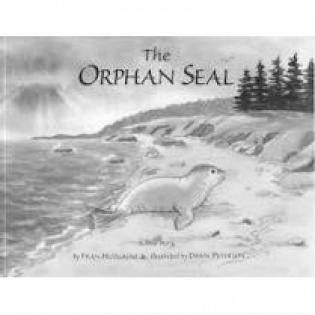The Orphan Seal Literature Guide
A young seal pup becomes separated from his mother in heavy surf and ends up on a beach in Maine. Orphaned, cold, and scared, the seal is rescued by the scientists at the New England Aquarium. This touching story follows Howler’s story as he is cared for, rehabilitated, and finally released into the wild. It teaches valuable lessons about what to do when we find a wild animal in distress and how we are caretakers for these wild animals. It also helps children understand that though cuddly and adorable, these animals are wild and belong in their natural habitat.
Before Reading
ASK: What do you know about seals? Do you know where they live, what they eat, and if they are a mammal or a fish? Write down all the facts you think you know about seals. Then write anything you’d like to know about seals.
SHOW: Flip through the book and look at the pictures of the seals. What emotions do you feel when you look at them? Write a list of emotions. Some examples of emotions are happiness, fear, compassion, and sadness.
CONNECT: Have you ever seen a seal in the wild or at an aquarium? What was most interesting about this animal?
During Reading
ASK: As you read, try to answer this question: What are the basic needs of a baby seal? How do the caretakers at the New England Aquarium help meet those needs?
SHOW: Look at the pictures of Howler at the aquarium. Notice how the aquarium workers are helping him.
CONNECT: How are the needs of a baby seal the same or similar to the needs of a human baby? Why is it important that a seal have help from people like those at the aquarium?
After Reading
ASK: What does the author mean when she says “the lure of the ocean is strong” for Howler?
SHOW: Look at the last picture in the book of Howler in the open water.
CONNECT: Do you think Howler will miss his human helpers? Why do you think it is in his best interest for the people to release him into the wild? How does this make the aquarium workers good caretakers of wild animal life?
Activities
- In this story, marine biologists and veterinarians need to know a lot about seals in order to help them. Create a scientific drawing of a seal. First cut out the shape of a harbor seal from gray construction paper and glue it onto another piece of paper. Then use a marker and a ruler to draw lines to and label important parts of the seal, such as whiskers, flippers, nostrils, eyes, etc.
- Harbor seals are classified as near threatened mammals. Look up what “near threatened” means and think of ways that we can help these marine mammals. The book says the seal in this story is “protected by law.” Why?
- Write your own list of rules for what to do if you find a stranded marine animal. Research what to do when you find a stranded animal. Write a list of these rules in your own words.
- Use your time, talent or treasure to help protect marine animals. Find out ways you can make a difference throug the New England Aquarium.
